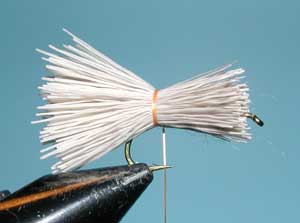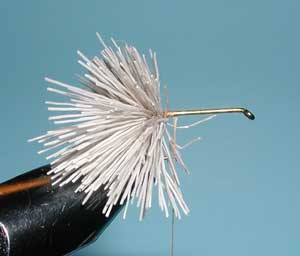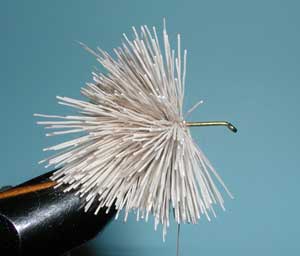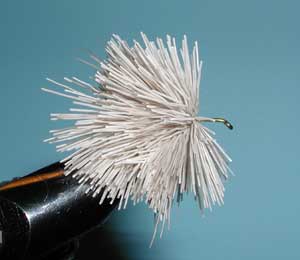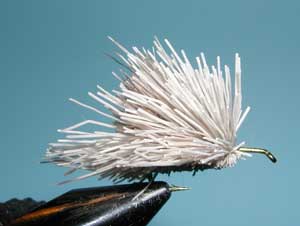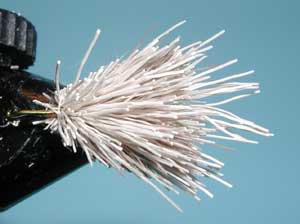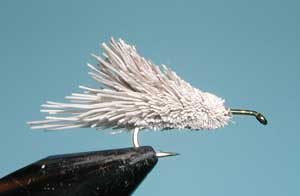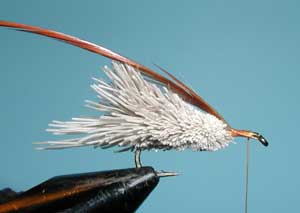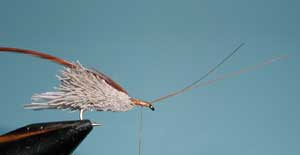Goddard Caddis – high floatation with a strong wake
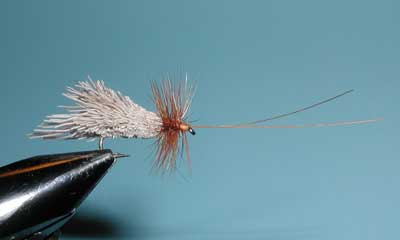
Goddard Caddis
Tying Instructions
| Materials
to Order Material, click the link |
|
|---|---|
| Hook | TMC 100, size 10-18 |
| Thread | Danville Tan 6/0 |
| Body | Natural Medium Deer Hair |
| Antennae | Brown Hackle, stripped |
| Hackle | Brown Hackle |
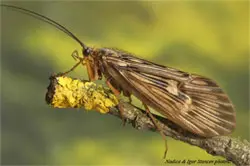
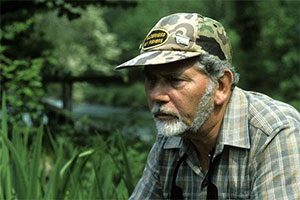
John Goddard
Goddard Caddis
Initially, the Goddard Caddis pattern was developed by John Goddard and his friend, Clive Hendry, in London, England as a stillwater pattern. The idea was to spin hair such as Deer, Elk Belly, or Caribou and trim it into a caddis shape. The hair can be found in a number of colors and mixing the hairs would give the fly a mottled character.
A Sierra connection
Conveying their thoughts of this fly to their friend, Andre Puyans, Andre developed the first prototype. Originally, this fly was known as the G&H Sedge in Great Britain. It had a Deer Hair body with a rope of Olive Seal’s Fur that extended under the Deer Hair. The hackle was trimmed on the top. Andre made his own modifications to the pattern and he promoted this fly as the Goddard Caddis. The name stuck. Since Andre also had a Fly Shop near San Jose, CA, the fly was soon introduced to Sierran fly fishers and became a popular pattern.
Due to it’s high floatability, the Goddard Caddis can also be used in fast moving waters. Within slower moving waters, the fly will create a very realistic wake when retrieved, skittering on the surface. This is very similar to what the actual Caddis insect does when it emerges at the surface and quickly tries to swim to the bank for safety. A telltale wake will ensue.
Andre would sometimes use a marking pen to color the belly of the fly to match the insect. The fly can also be used to represent hoppers and stoneflies. For hoppers and stoneflies, use a floatant and fish the pattern near banks with foliage overhangs.
Variations
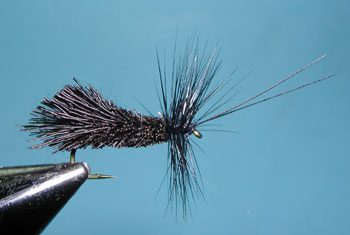
Goddard Caddis, Black
| Hook | TMC 100 #10-18 |
| Thread | Danville Black 6/0 |
| Body | Black Dyed Deer Hair |
| Antennae | Black Hackle, stripped |
| Hackle | Black Hackle |


